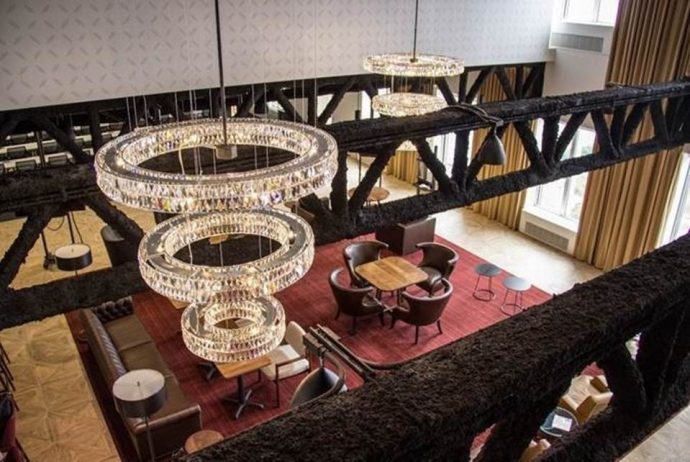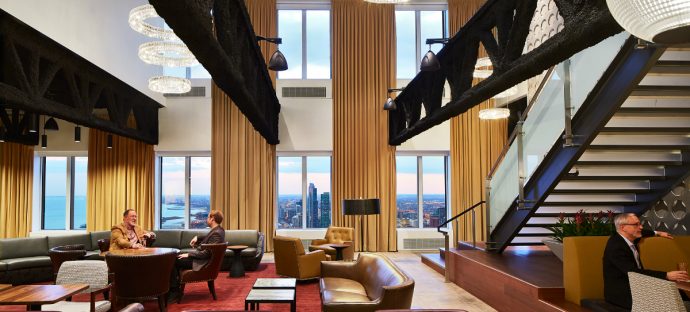Five ways a high-achieving workplace design can unlock collective sense of purpose
As human beings, we are hard-wired to crave meaning. Without a sense of purpose, we become vulnerable to boredom, anxiety, and even depression—which, at work, can diminish our enthusiasm and soften our focus. With a clear sense of purpose, however, we can realize our true potential as dedicated as colleagues and peers. We can adopt organizational culture and goals as our own, feeding shared success with new ideas and more productive time spent.
My fellow workplace leaders know that these are not just touchy-feely ideals; they are practical, achievable aspirations, when you deliver a workplace designed to support a sense of purpose. Neil Usher in his latest book “The Elementary Workplace”, brilliantly brings it to life and argues for an end to complexity incredibly well articulated around a series of 12 “Elements” for creating a fantastic workplace for everyone. Getting back to the basics is essential when we design working environments for people.
So, what inspires employees to bring their best selves to work? We know that high-achieving workplaces prioritize human pride and happiness. But happiness is not as simple as it may sound. The notion of happiness at work could mean so many different things: wellbeing, fun, motivation, joy, reward, comfort etc. As behavioral scientist Paul Dolan writes, genuine happiness lies both in finding pleasure, and in finding purpose.
To actively help others experience that deeper level of satisfaction at work, strive to create spaces that are comfortable, inviting, and most importantly, empowering.
The rewards of your efforts can be profound in terms of organizational productivity. According to our research, Workplace, powered by Human Experience, which is based on a survey of more than 7,000 employees, thoughtful workplace design can fuel engagement, empowerment, and fulfillment across the board, leading to higher levels of innovation, and more committed teams.
Five ways to create a high-achieving environment
You needn’t be a motivational speaker to connect others to their own sense of purpose. In fact, workplace strategists can create a more lasting impact for teams by designing for day-to-day inspiration, that can be sustained over the long run, too.
Following are five design elements that can help fuel a sense of purpose:
- Offer inspirational settings where productivity comes naturally. A function-first approach may seem more economical at first glance than a modern, human-oriented space. But the reality is that cutting corners to “get the job done” can also easily cut the potential for productivity-derived value. After all, it’s difficult for anyone to feel fulfilled in too confined a space, or one that doesn’t reflect the larger nature of the team’s work. Instead of austerity, bring flexibility, comfort and life into the office. If you’re retooling a meeting room, for instance, think about how elements like technology and layout can spark creativity and open up dialog, rather than simply how many chairs can be fit around the table. Consider, too, how stylish, yet functional furniture supports and reflects the task at hand.
- Show employees they’re valued with quality materials and features. From office desks to overhead lighting to HVAC, the quality of materials you choose can have a direct impact on employee morale and health. Cheap, uncomfortable chairs, for instance, convey the sense that the people using them are also seen as low value. In addition to keeping morale low, uncomfortable furniture and air quality can also detract from employee focus, threatening productivity.
- Connect employees to a larger organizational purpose, aka, use the brand. A compelling organizational purpose can feed self-purpose, too—but only when employees feel connected to what makes their organization special. This is an area of great opportunity, considering a Gallup poll found only 41 percent of employees fully understand their company’s brand. At JLL, we actively weave our brand purpose and culture throughout our workspace, with careful use of texture, pattern, images and color. We’re not alone in the effort, either. Consider, for one, the world’s largest appliance manufacturer, Whirlpool, whose workplace features light fittings that reflect the configuration of their washing machines. The key is to go beyond slapping the latest logo onto the front wall, and consider more strategic ways to bring the corporate culture to life.
- Create space to support idea exchange. Showing people, through physical space, that their views are important can be a powerful way to help them feel purpose. For instance, Stanford University workplace leaders have constructed a theatrical, stepped design location for employees to discuss ideas on a larger platform, a clear show of support for idea exchange. Another way to show trust and encourage initiative is to offer innovation spaces, demonstrating the organization values not only the wild idea, but also its active pursuit.
- Power up engagement opportunities. Humans have a basic need to engage with one another—as evidenced in part by the overwhelming 90 percent of our survey respondents who said they want to learn, grow and share knowledge with their co-workers. Engaging with people we admire and appreciate professionally helps us feel more connected to each other—and to our shared purpose. Design a workplace to create casual collisions to enable people to bump into each other, provide access to virtual-appointment conference rooms, or a gourmet coffee bar.
These are just some of the many ways workplace design can help ignite a sense of purpose at work. Designing working environment with employees’ wellbeing and comfort in mind should be your number one priority to create a deep sense of purpose and ultimately boosting performance. Elemental Mr. Usher!







This post is very simple to read and appreciate without leaving any details out. Great work!
Great reading experience !!!
[…] warm, welcoming spaces that invite the exchange of ideas across teams, specialties and generations. Work Design Magazine proposes increasing opportunities for social engagement by designing an office that offers the […]
[…] warm, welcoming spaces that invite the exchange of ideas across teams, specialties and generations. Work Design Magazine proposes increasing opportunities for social engagement by designing an office that offers the […]